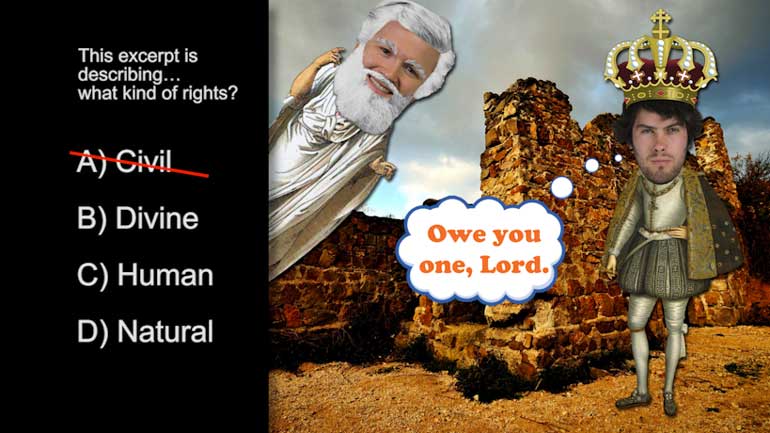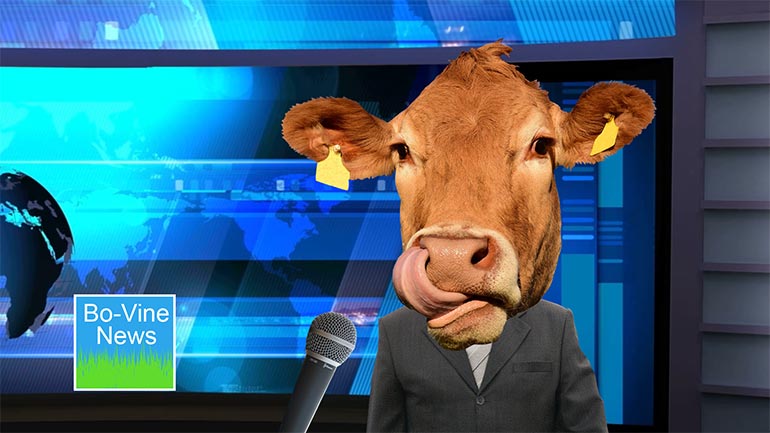ShmoopTube
Where Monty Python meets your 10th grade teacher.
Search Thousands of Shmoop Videos
Econ: What is a Production Possibilities Curve? 10 Views
Share It!
Description:
What is a Production Possibilities Curve? The Production Possibilities Frontier Curve (PPF) is a statistical graphic curve that depicts the comparison of maximum output possibilities between two commodities or goods, when factors such as labor, capital, technology, and other resources are entered into the equation.
Transcript
- 00:00
And finance Allah Shmoop What is the production possibilities Curve
- 00:08
Okay people Maybe Willy Wonka was onto something And with
- 00:11
all that pure imagination talk the people in charge of
- 00:14
making stuff have to survey their production like you know
- 00:18
your dog's surveys the yard every morning as if she's
Full Transcript
- 00:21
never seen it before You're imagining all the possibility to
- 00:24
make more of this for more of that Yes well
- 00:27
but of course firms aren't imagining that can make unlimited
- 00:30
amounts of stuff They're imagining riel possibilities Things they could
- 00:34
do with the resources they have on hand Will this
- 00:37
imaginary world too constrained Fourth fun stuff like triple rainbows
- 00:41
unicorns and trees that grow video games is the stuff
- 00:44
of the production possibilities curve Will the production possibilities curve
- 00:48
also known as the production possibilities Frontier shows the different
- 00:52
combinations of two goods that can be made with a
- 00:54
given bucket of stuff we already have Like labor inputs
- 00:58
hardware all that stuff We'll call it the PPC for
- 01:01
short To save ourselves You know some precious breath Well
- 01:03
the PPC usually looks like this kind of bowing out
- 01:07
there Yeah on the X axis is one good and
- 01:10
the Y axis Another good So every point on this
- 01:13
graph not just the curve The whole box is a
- 01:15
different combination of two things The curve tells us what
- 01:19
our best options are Well in the nineteen nineties there
- 01:22
was a prankster company called Texcoco The name alone messed
- 01:25
with people which made fake mustache is and whoopee cushions
- 01:28
in its factory using things like rubber glue plastic labor
- 01:32
and capital Yeah all that factory equipment stuff Well Texaco
- 01:36
had some decisions to make It could make only fake
- 01:39
mustache is with resource is on hand which would result
- 01:41
in the production of one hundred mustache Is it Could
- 01:44
also on ly make whoopee cushions like Texaco could make
- 01:47
a thousand whoopee cushions if it only dealt in the
- 01:50
whoopee cushion underground Are you know market Or maybe it
- 01:53
could make mostly whoopee cushions like nine hundred of them
- 01:56
And some mustache is Well let's see if we can
- 01:59
make a nine hundred What big oceans that leaves enough
- 02:01
resource is for twenty five Fake mustache is Yeah And
- 02:05
all these production options are options on our PPC This
- 02:09
thing Well why do economists go with a fancy shmancy
- 02:11
curve over a boring table Well tables are hard to
- 02:14
look at All those numbers air dizzying you know and
- 02:17
economists are on the brink of a heart attack all
- 02:19
the time anyway thanks to those boom and bust cycles
- 02:21
But that's another story A curve is a nifty tool
- 02:24
because it shows us all of that info without all
- 02:27
the numbers It's also handy because unlike a table a
- 02:30
curve is continuous Justus There are an infinite number of
- 02:34
numbers between zero and one right It's continuous if we
- 02:37
missed an option in our table while we won't miss
- 02:40
it in the curve because while it will be part
- 02:42
of the curves it's all the little dots in here
- 02:43
We also like the curve because it tells us things
- 02:46
like a fortune teller you know but accurate For instance
- 02:49
all of our most efficient production possibilities are on the
- 02:52
curve Efficiency here means Bobby Joe and William Jr The
- 02:56
fifth are pumping out Moustache is and will be cushions
- 02:58
using their work time to be as productive as possible
- 03:01
Save the Hanji time for lovers Lane Yeah okay Well
- 03:05
yeah they're not only being diligent workers on the clock
- 03:07
but are also using the rubber and glue and things
- 03:10
to the utmost capacity wasting as little as possible Yeah
- 03:13
it's a scarce world out there Well basically a firm
- 03:16
is getting the most bang and not the lover's lane
- 03:18
kind for its buck when production is efficient And that's
- 03:21
when we're walking the line of the PPC So what
- 03:24
if Bobby Joan William Jr The Fifth we're wasting time
- 03:27
making intense eye contact from across the factory floor Well
- 03:30
they're wasting time and letting glue fall to the floor
- 03:33
causing all kinds of waste and problems that will take
- 03:36
time to fix Yeah it's pretty bad Which would mean
- 03:38
Texaco is producing somewhere under the curve Not the best
- 03:42
use of our scarce resource is Well Texaco must do
- 03:45
its best to bring its pranks to the prankster of
- 03:47
the nineties Yeah What about this area over the curve
- 03:51
The land of unicorns and video game fruiting trees The
- 03:54
land of Well just not gonna happen Makes sense because
- 03:58
at the line we're already doing as much as we
- 04:01
simply can With the little we have we're at one
- 04:03
hundred percent We can't be doing one hundred eighteen percent
- 04:06
of our capacity right Well there's one case where we
- 04:08
could produce outside the curve If some of Bobby Joe
- 04:11
and William Juniors labor was replaced with robots that made
- 04:15
the stash is and cushions more efficiently while our curve
- 04:18
would shift outward It's just what technological innovation does It
- 04:22
helps us make things better than before Well the curve
- 04:24
also shows trade offs and opportunity costs You know the
- 04:27
reason we have to choose one option Things are limited
- 04:30
It shows that if we started making on ly whoopee
- 04:33
cushions while we can make a thousand if we put
- 04:35
all the resource is into just making those you know
- 04:37
remember we can trade off one hundred whoopee cushions to
- 04:40
make twenty five Moustache is it's kind of our equation
- 04:42
making nine hundred cushions and twenty five stashes instead of
- 04:46
a thousand and zero That's an opportunity cost of those
- 04:49
hundred whoopee cushions Twenty five Moustache will give a little
- 04:52
of one thing to get a little of another thing
- 04:54
The market you know where pranksters run rampant will help
- 04:56
companies like Texaco figure out which point on the PC
- 05:00
is their best bet Okay people to recap the production
- 05:03
possibilities Frontier shows us all the options for producing two
- 05:06
things as efficiently as possible With the scarce resource is
- 05:09
available It shows us things like our trade offs and
- 05:12
opportunity costs unfortunate things firms have to face in real
- 05:16
life because yeah there's scarcity People sees curve outward like
- 05:20
that because our trade offs aren't one toe one Our
- 05:23
opportunity cost increases We trade off one thing for another
- 05:26
moving along the curve Well the graph is better than
- 05:29
the table because we can literally see what the production
- 05:32
possibilities are how they're efficient and all that and which
- 05:35
ones are impossible Yeah And then of course the inefficient
- 05:38
ones that live down there Alright Yeah and we're looking
- 05:40
at you Bobby Joe Come on man Get your shoe
- 05:42
out of the glue before it hardens there When we
- 05:45
replacing you with a robot let's get back down Yeah
Up Next
GED Social Studies 1.1 Civics and Government
Related Videos
What is bankruptcy? Deadbeats who can't pay their bills declare bankruptcy. Either they borrowed too much money, or the business fell apart. They t...
What's a dividend? At will, the board of directors can pay a dividend on common stock. Usually, that payout is some percentage less than 100 of ear...
How are risk and reward related? Take more risk, expect more reward. A lottery ticket might be worth a billion dollars, but if the odds are one in...




